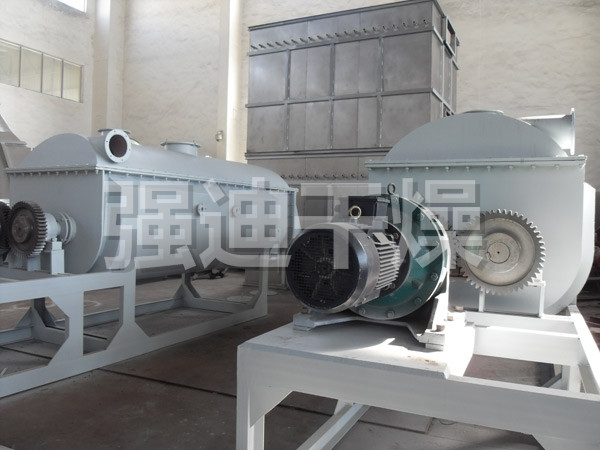
Dry modified starch production line
Nav:Other
Content:The product can be heated or cooled indirectly for paste, granular, powdery and slurry materials, and can be used for drying, cooling, heating, sterilizing, reaction, and low temperature combustion.
Product introduction:
The product can be heated or cooled indirectly for paste, granular, powdery and slurry materials, and can be used for drying, cooling, heating, sterilizing, reaction, and low temperature combustion. The special wedge type mixing heat transfer blade has high heat transfer efficiency and self cleaning function of the heat transfer surface.
Working principle:
The hollow shaft is densely arranged with wedge-shaped hollow leaves, and the heat medium passes through the hollow shaft to flow through the pulp leaves. The heat transfer area per unit effective volume is very large. The temperature of the heat medium is from - 40 C to 320 C. It can be steam or liquid, such as hot water, heat conducting oil, etc. Indirect conduction heating does not carry air to carry heat, and heat is used to heat the material. The heat loss is only the heat dissipation from the insulation layer to the environment. The heat transfer surface of the wedge shaped blade has a self cleaning function. The relative motion between the material particles and the wedge surface produces a washing effect, which can wash away the adherent materials on the wedge surface and keep the clean heat transfer surface in operation. The shell of the pulp dryer is an Omega type, and two to four hollow stirring shafts are generally arranged inside the shell. The shell has a sealed end cover and an upper cover to prevent the material dust from escaping and fully play its role.
The heat transfer medium passes through the rotating joint, flows through the shell jacket and the hollow mixing shaft. The hollow mixing shaft has different internal structure according to the type of hot medium, so as to ensure the best heat transfer effect.
The product can be heated or cooled indirectly for paste, granular, powdery and slurry materials, and can be used for drying, cooling, heating, sterilizing, reaction, and low temperature combustion. The special wedge type mixing heat transfer blade has high heat transfer efficiency and self cleaning function of the heat transfer surface.
Working principle:
The hollow shaft is densely arranged with wedge-shaped hollow leaves, and the heat medium passes through the hollow shaft to flow through the pulp leaves. The heat transfer area per unit effective volume is very large. The temperature of the heat medium is from - 40 C to 320 C. It can be steam or liquid, such as hot water, heat conducting oil, etc. Indirect conduction heating does not carry air to carry heat, and heat is used to heat the material. The heat loss is only the heat dissipation from the insulation layer to the environment. The heat transfer surface of the wedge shaped blade has a self cleaning function. The relative motion between the material particles and the wedge surface produces a washing effect, which can wash away the adherent materials on the wedge surface and keep the clean heat transfer surface in operation. The shell of the pulp dryer is an Omega type, and two to four hollow stirring shafts are generally arranged inside the shell. The shell has a sealed end cover and an upper cover to prevent the material dust from escaping and fully play its role.
The heat transfer medium passes through the rotating joint, flows through the shell jacket and the hollow mixing shaft. The hollow mixing shaft has different internal structure according to the type of hot medium, so as to ensure the best heat transfer effect.
Next:Period



